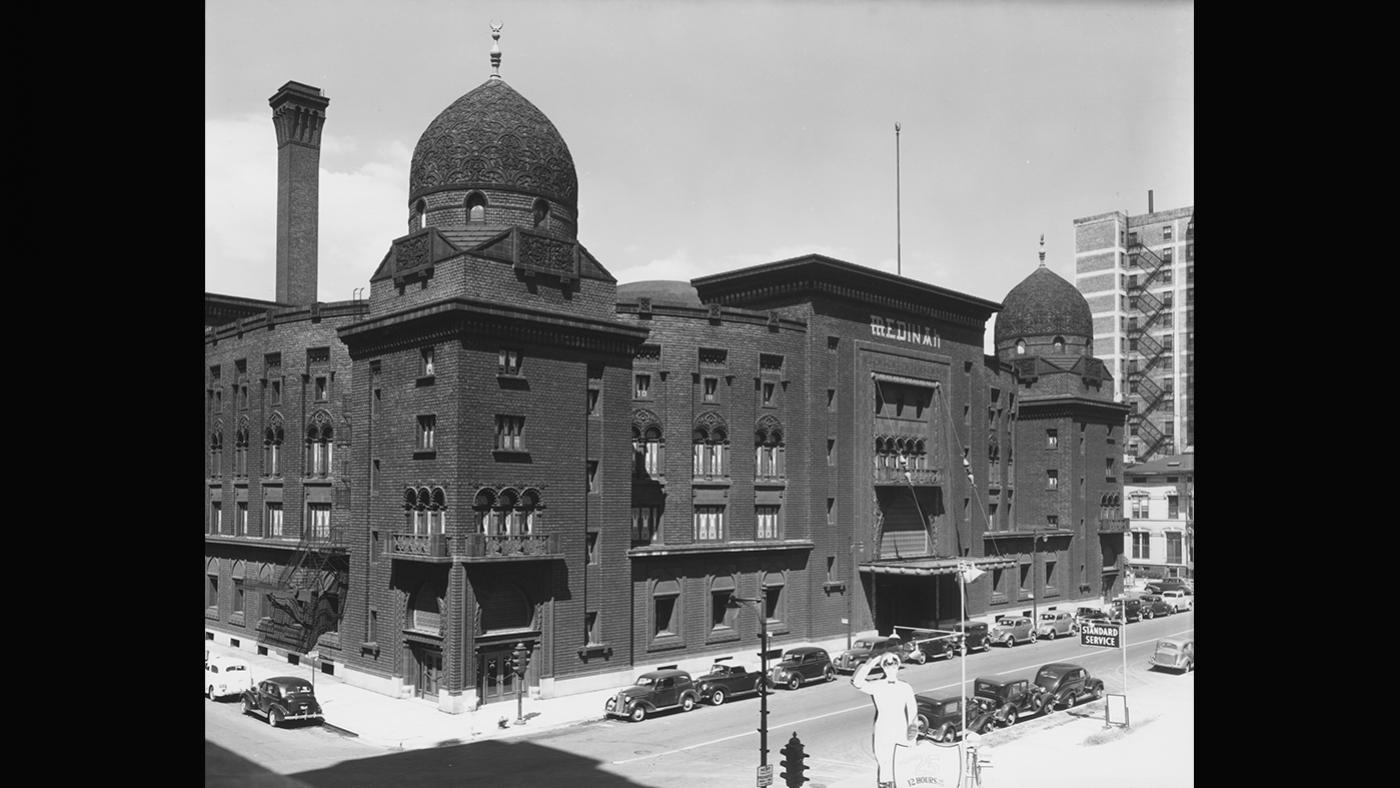The Many Colorful Uses of Medinah Temple, Soon to Be a Casino, Over the Years
Daniel Hautzinger
July 11, 2023

Over its more than a century of existence, the Medinah Temple in River North has housed an array of events as varied as its highly ornamented brick facade and as distinctive as its towering domes. The Chicago Symphony Orchestra made numerous recordings in the same amphitheater where an annual circus took place. The Dalai Lama and Martin Luther King, Jr. were celebrated there, as was Bozo the clown. Bloomingdale’s sold furniture in the building, which was originally constructed for the Ancient Arabic Order of the Nobles of the Mystic Shrine, also known as the Shriners.
Soon, the Medinah Temple will be home to a temporary casino, while Chicago’s first permanent casino is built across the Chicago River at the former home of the Chicago Tribune printing plant. The temporary casino could open as soon as this summer, despite the objection of the local alderman and many residents. A casino may be an unexpected use of Medinah Temple, but it is just the latest in a long series of colorful chapters for the memorable building.
This is not the first time a plan for the building has engendered controversy. In the late 1990s, Medinah Temple was under threat of demolition in order to make way for a high rise. It had been built as a meeting place for the Shriners by two of their own architects, Huehl & Schmid, in 1912. (The Shriners built the Medinah Country Club in the northwestern suburbs in the same Moorish Revival architectural style a decade later.) The auditorium had 4,200 seats and an impressively large organ.
But by the end of the century, the number of Shriners had dwindled, so they tried to sell the over-sized building. Plans for the location were complicated by the presence on the block of Tree Studios, an artist colony that had gained landmark status for its facade. With high rise construction shooting up everywhere in the area, a plan was floated to keep the facade of Tree Studios and build a tower behind it, demolishing both the colony and Medinah Temple.
That plan was eventually scrapped and both Tree Studios and Medinah Temple were saved. Medinah Temple’s facade was restored, new domes were constructed, and the interior was redesigned to house a Bloomingdale’s home store that opened in 2003 and closed in 2020. The organ eventually went to a church near the Wisconsin border.
Medinah Temple was also the site of protests in 1977, when the singer and beauty queen Anita Bryant came to perform there at an event for Shriner’s Children’s Hospital. She had just launched an anti-gay rights campaign, and gay rights activists in Chicago gathered outside Medinah Temple to picket her appearance. The protests helped fuel the growth of Chicago’s Pride parade, which took place that year only two weeks after Bryant’s appearance and saw an increased number of people attend.
A more celebratory occasion took place at the Medinah Temple in 1985, when politicians, artists, and ordinary citizens gathered to honor Martin Luther King, Jr. on what would have been his 56th birthday. Mayor Harold Washington, Stevie Wonder, Studs Terkel, the Catholic Cardinal Joseph Bernardin, and the actress Esther Rolle all took part in the festivities, which marked Chicago’s first citywide celebration of King, a year before Martin Luther King, Jr. Day was observed as a federal holiday for the first time.
A decade later, in 1996, different luminaries gathered at the Temple for a visit by the Dalai Lama that included readings by actor Richard Gere and a piano performance by the composer Philip Glass. Around the same time, Medinah Temple was being used by the Chicago Symphony Orchestra to record the soundtrack for Fantasia 2000. The CSO had been recording in the amphitheater since the 1960s.







